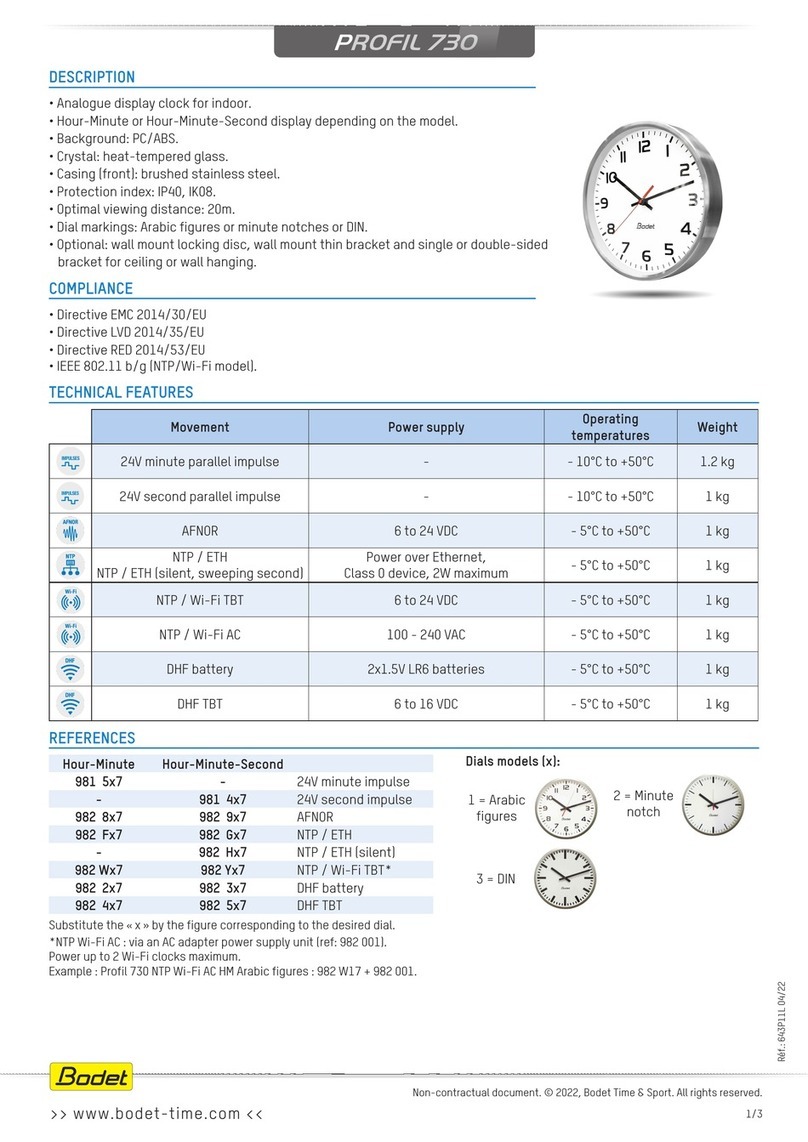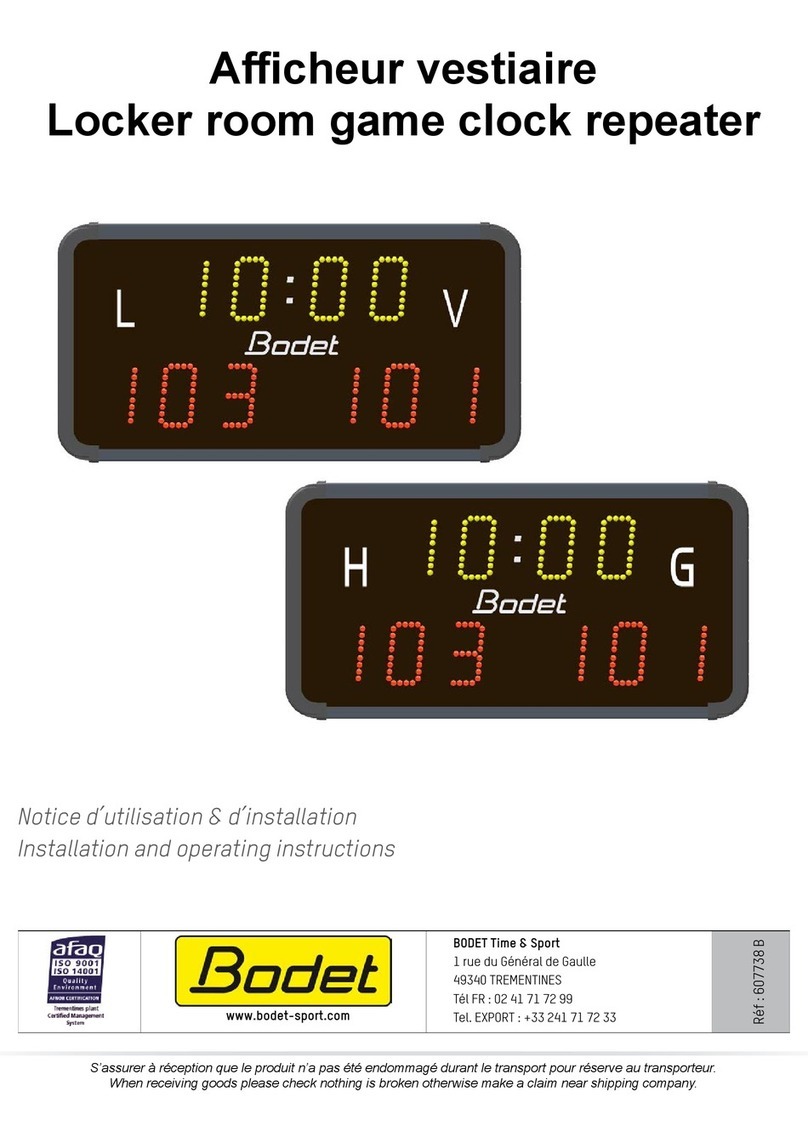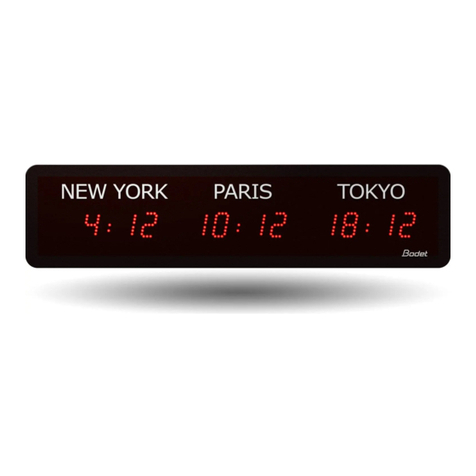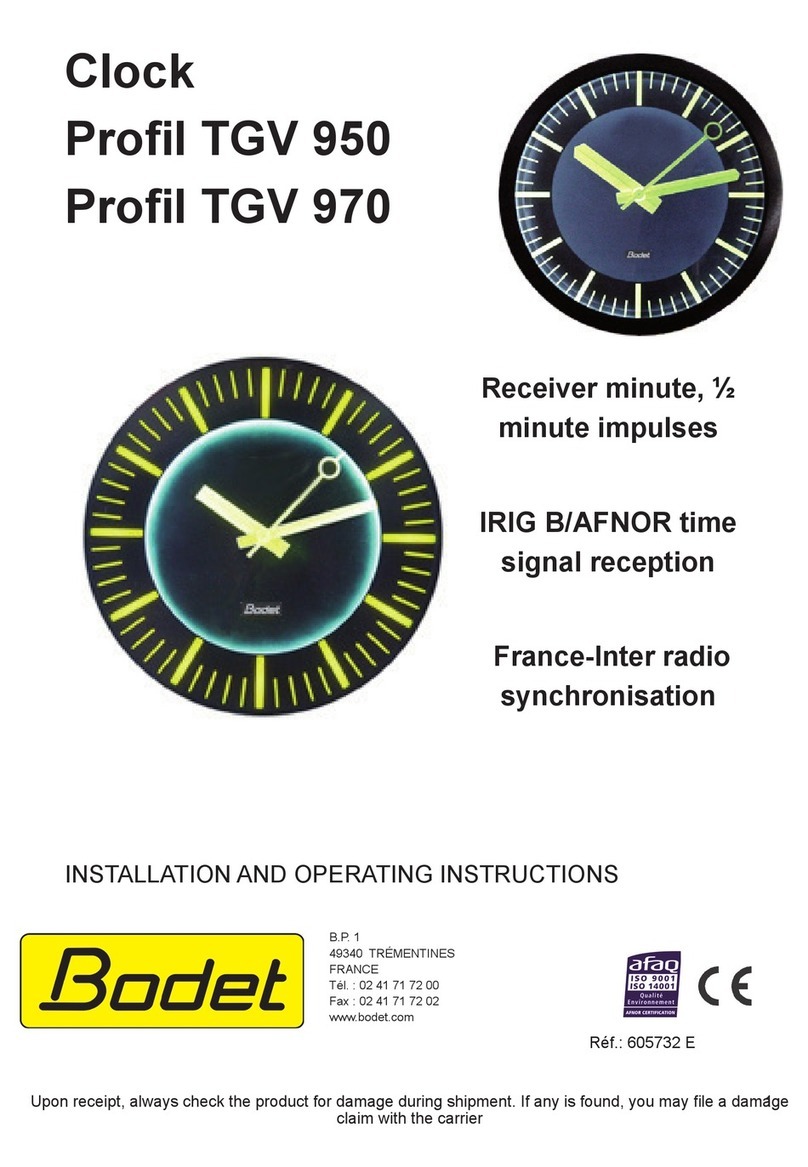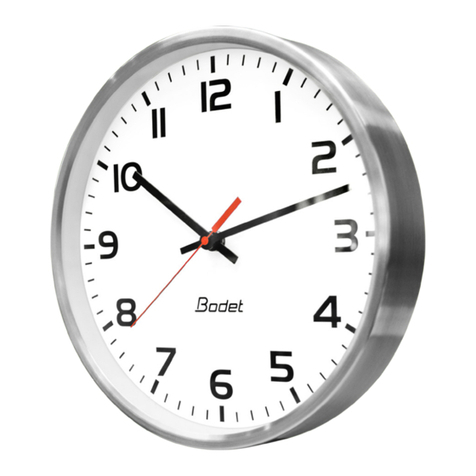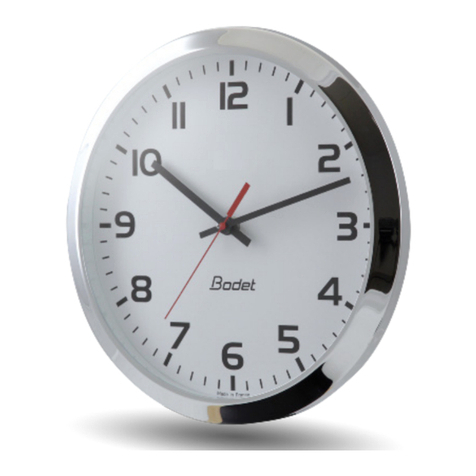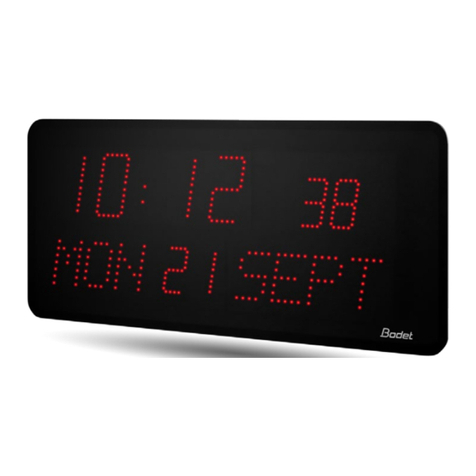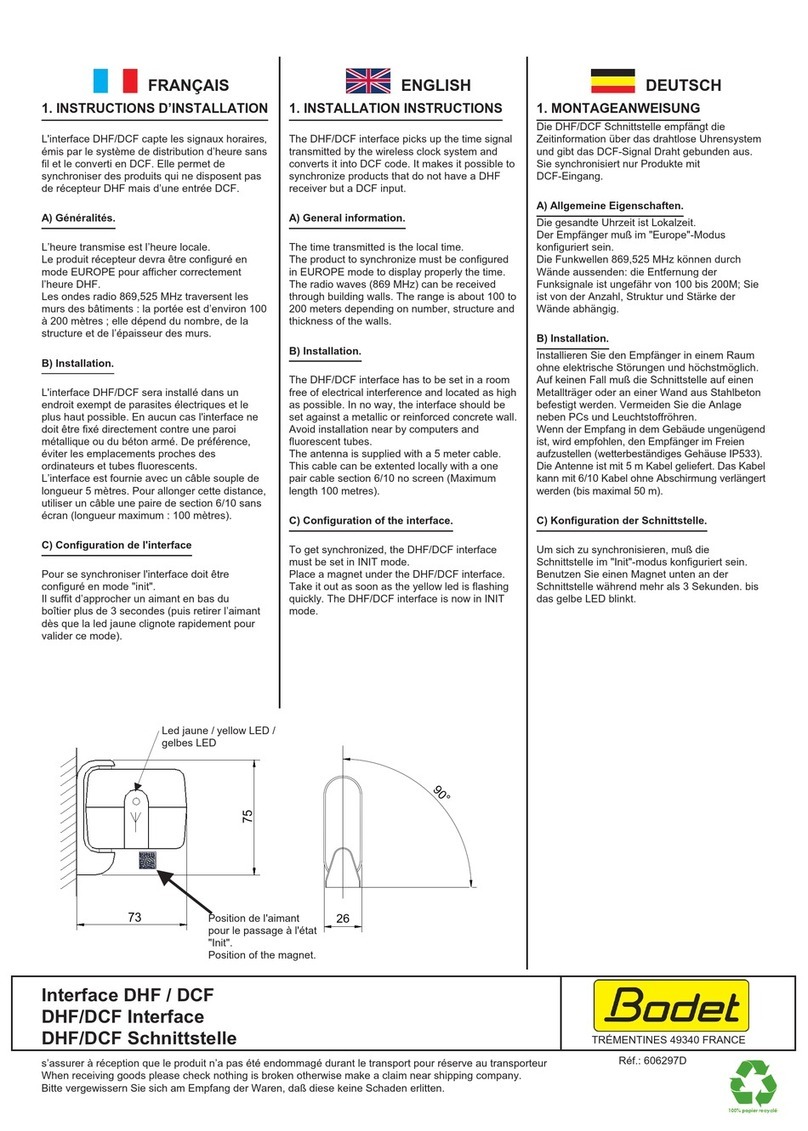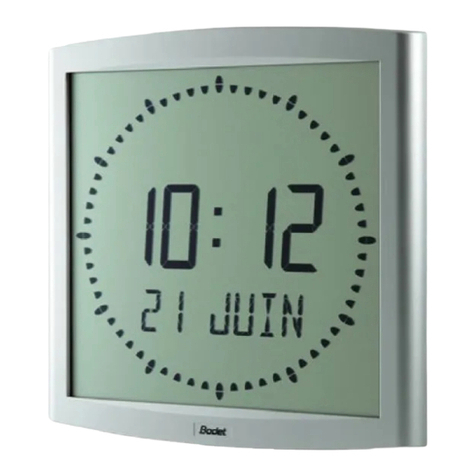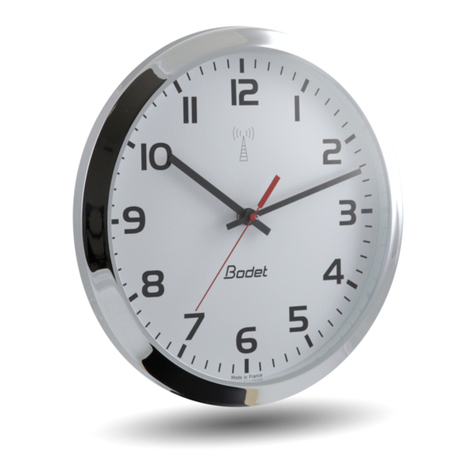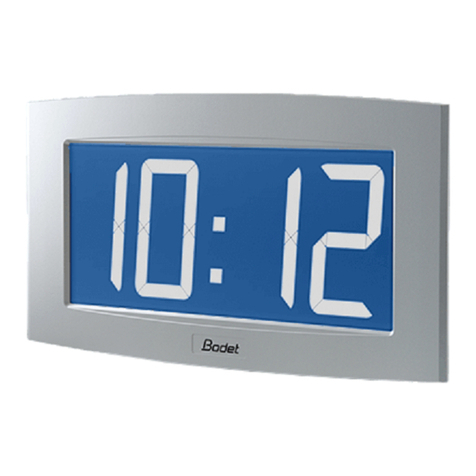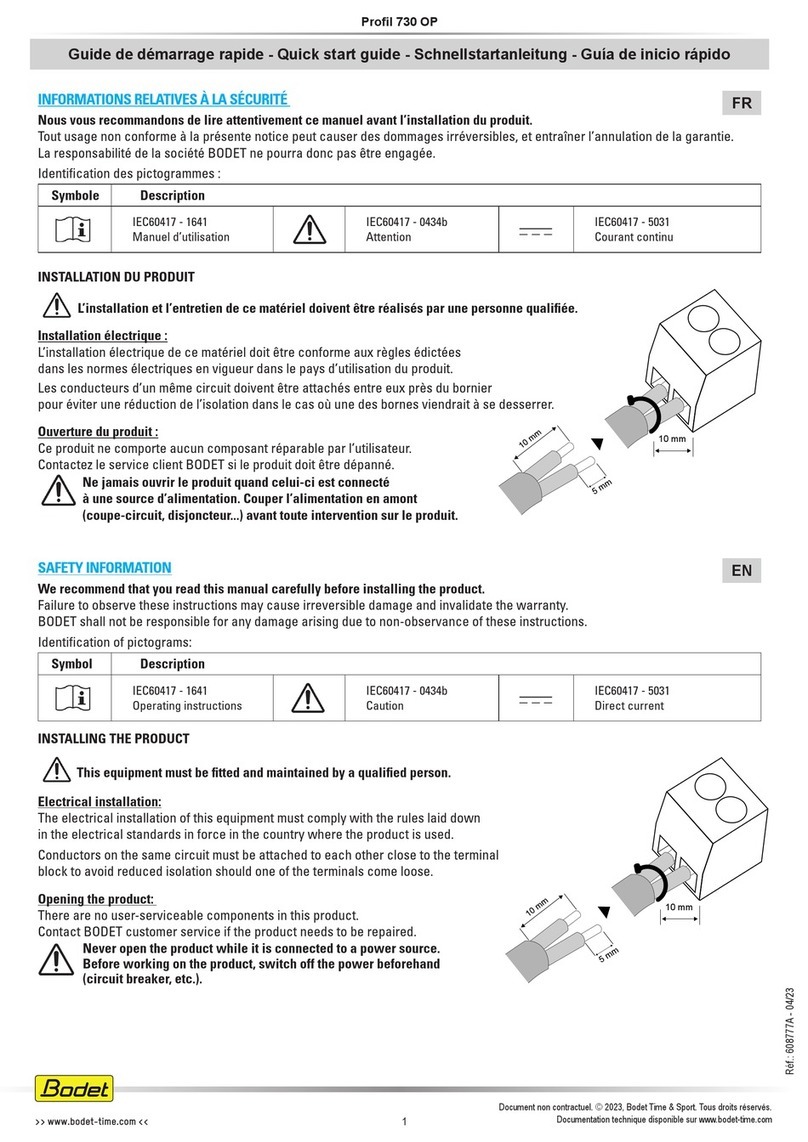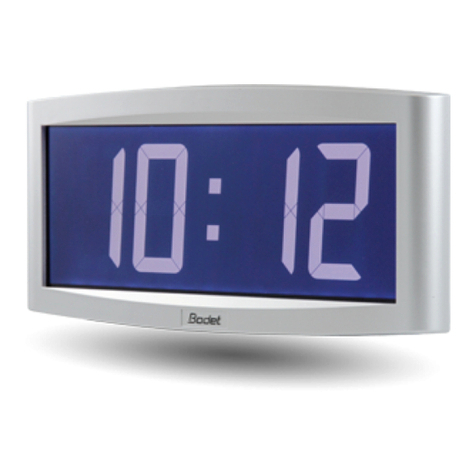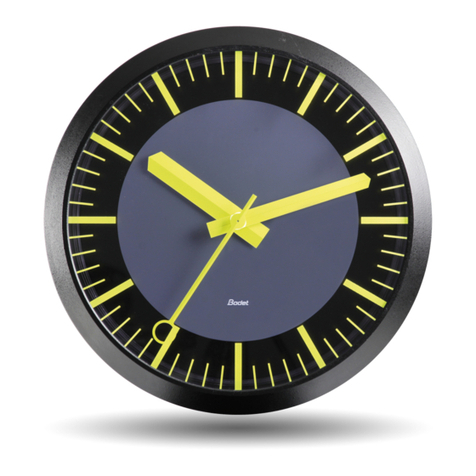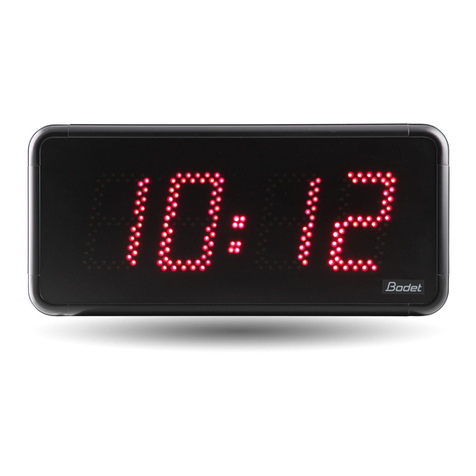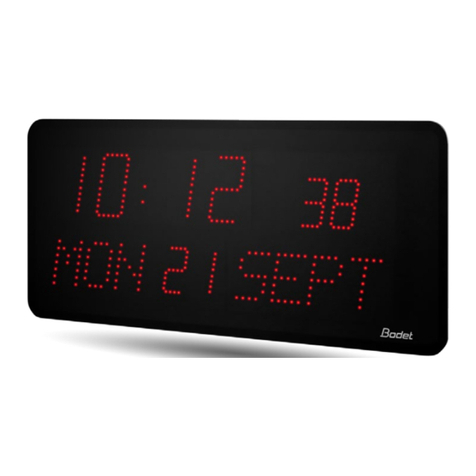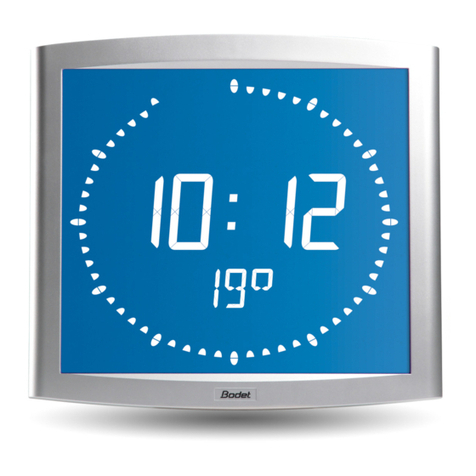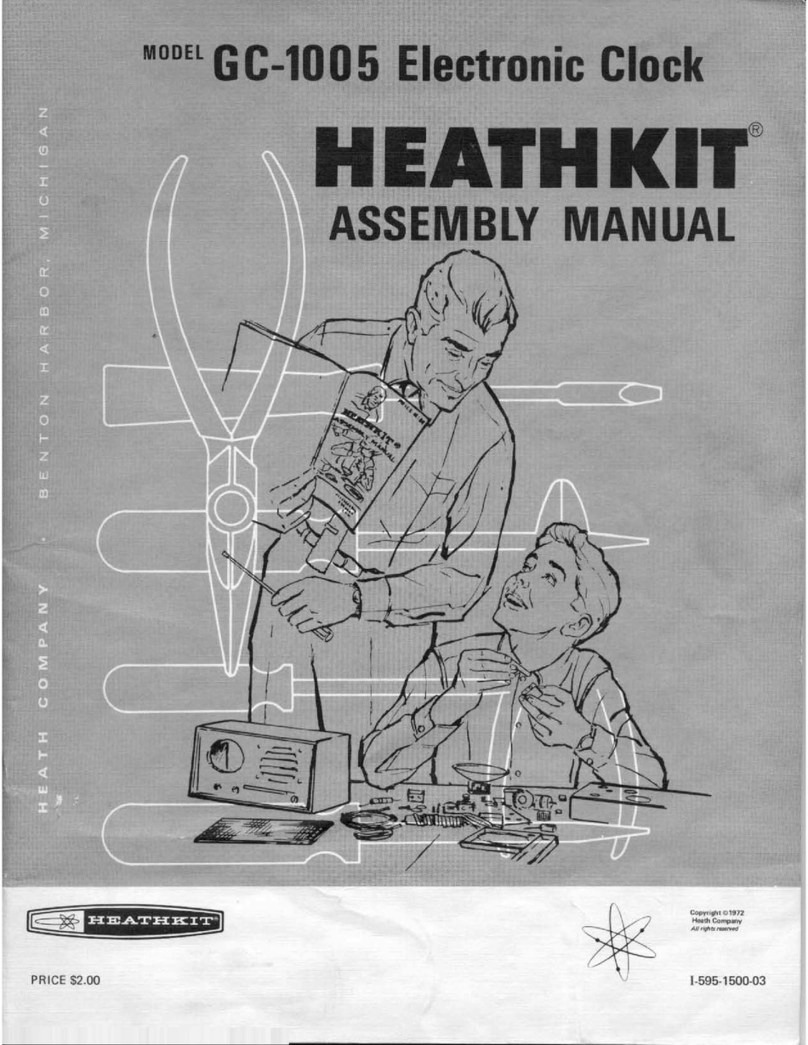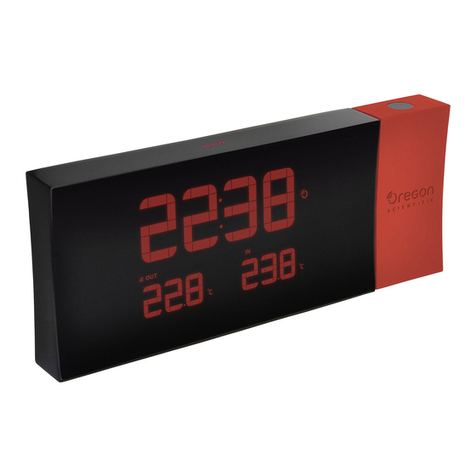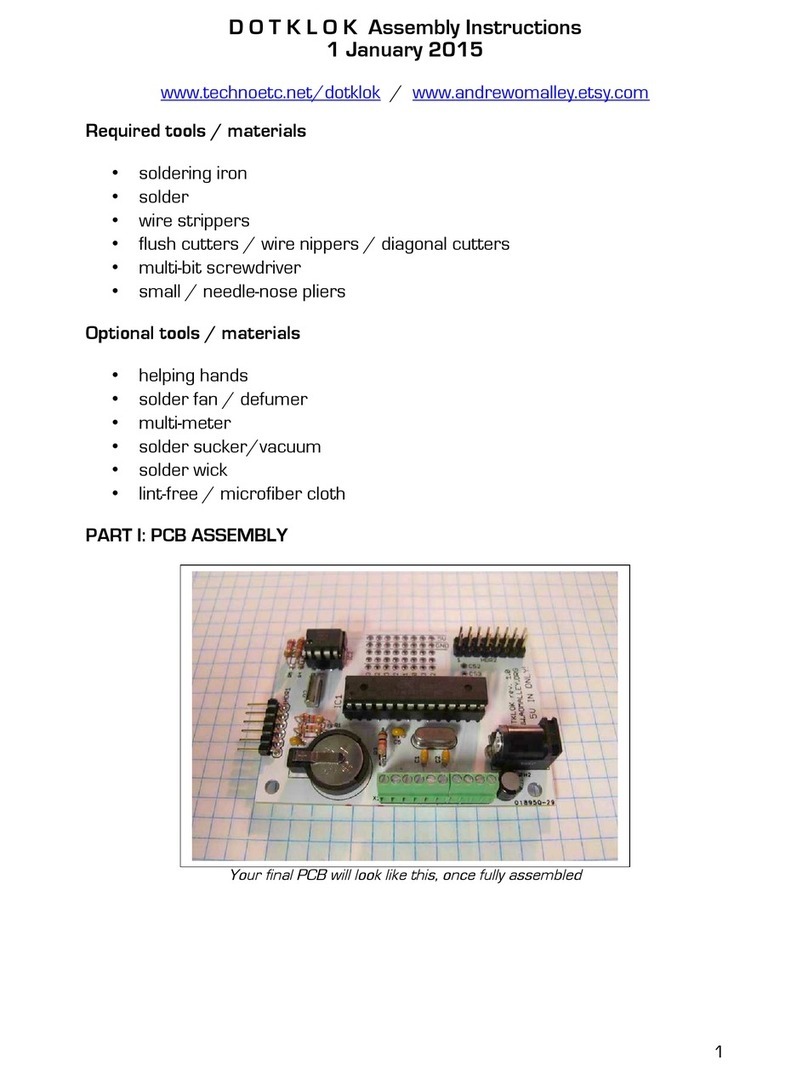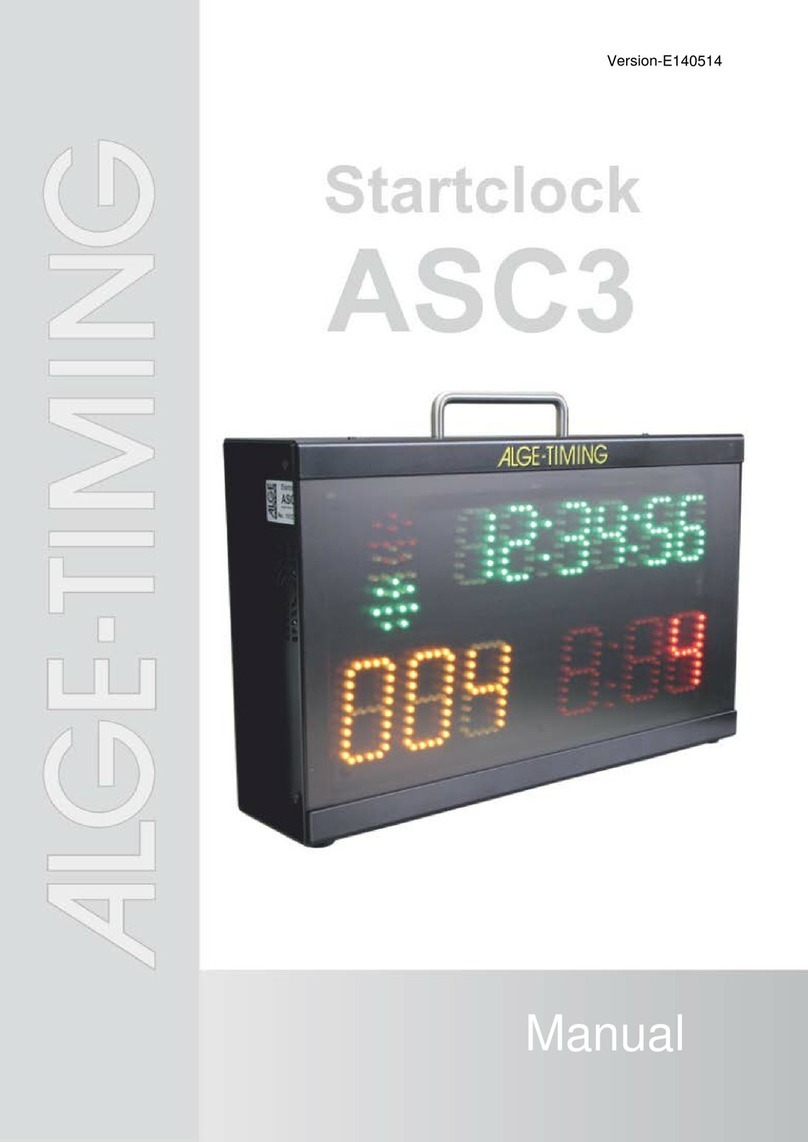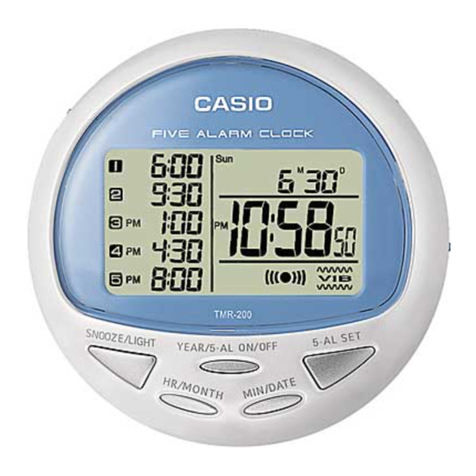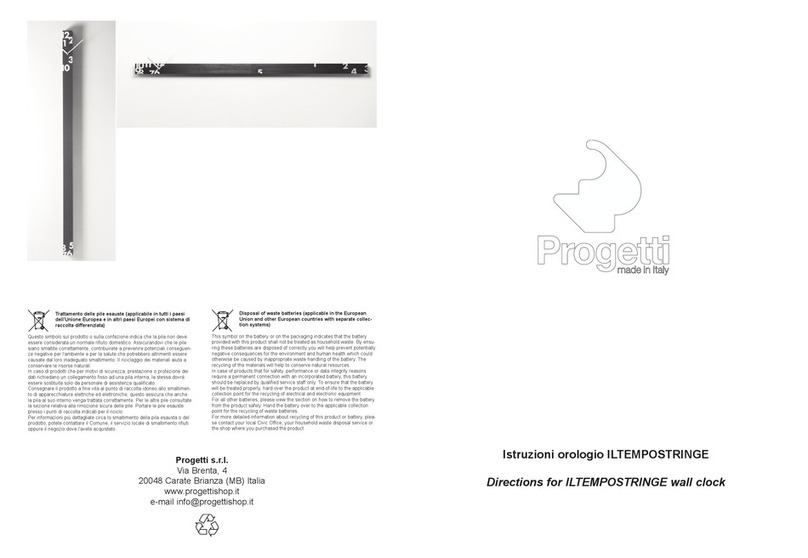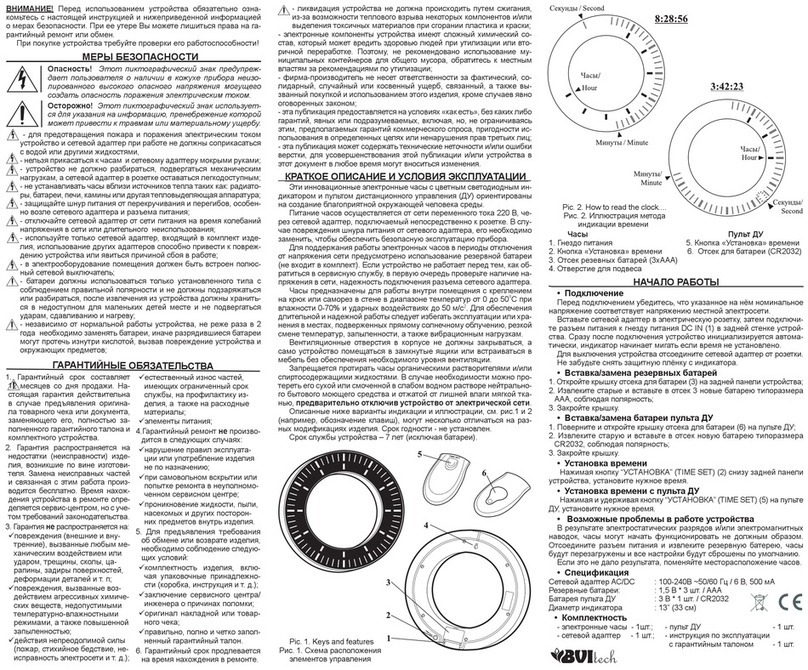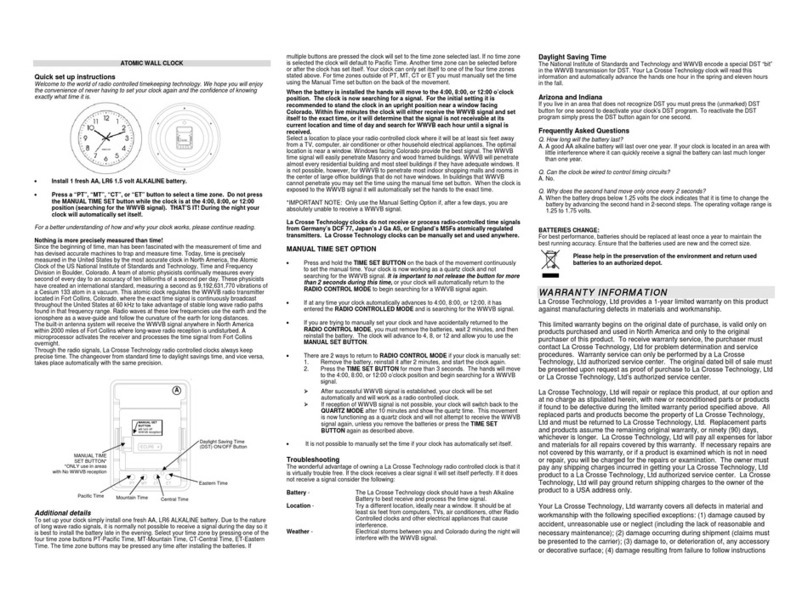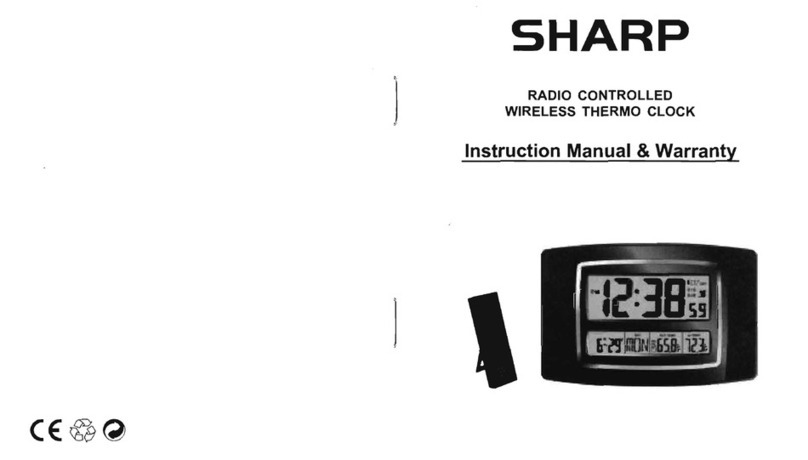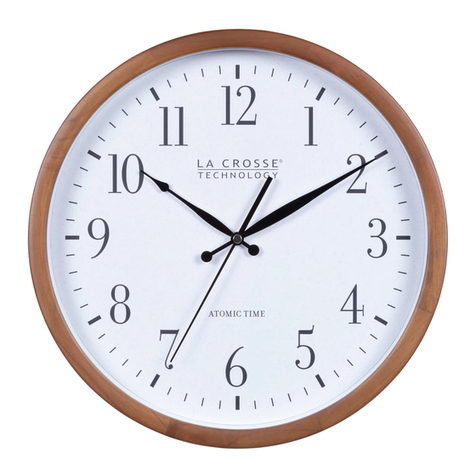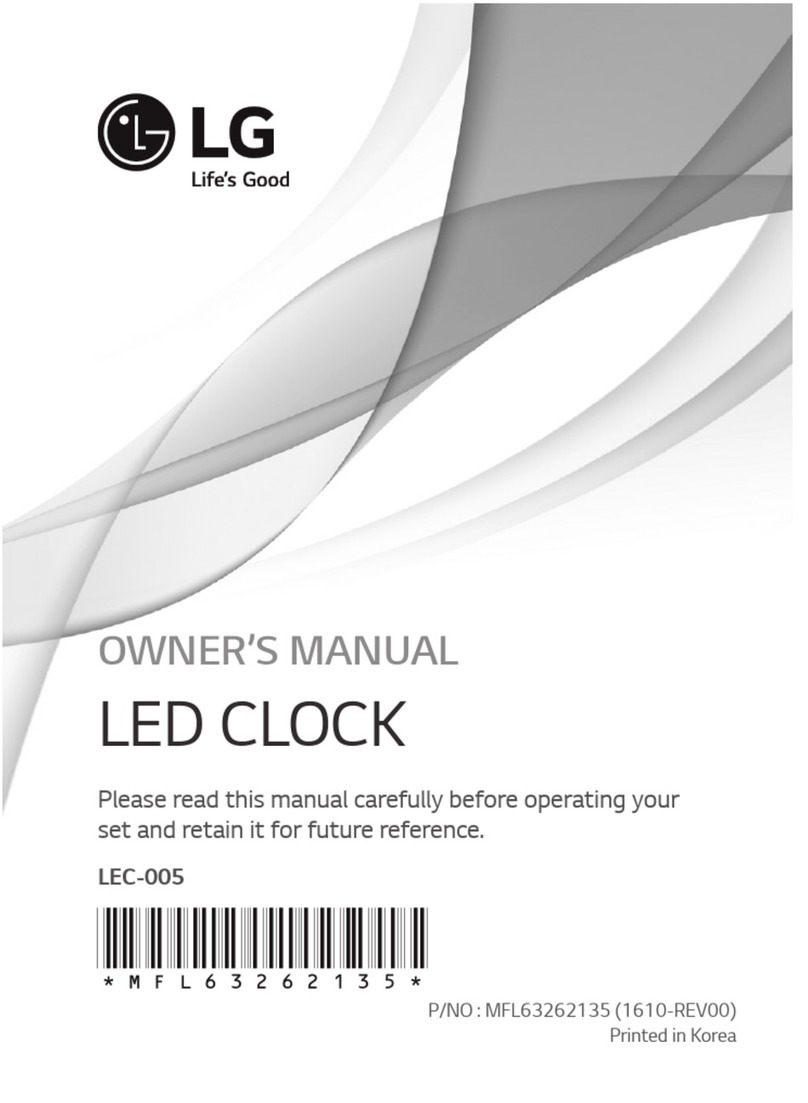Table of contents
I - INITIAL VERIFICATION ......................3
1.1 Unpacking the clock ...............................3
1.2 Cleaning .....................................4
II - INSTALLATION ..........................4
2.1 Single face indoor clock .............................4
2.2 Single Face outdoor clock ............................5
2.3 Double Face clock ................................5
2.3.1. Double Face integrated clock .......................6
2.3.2 Clock on keyboard .............................7
2.4 Setting the antenna................................7
III - POWER SUPPLY .........................8
3.1. AFNOR HM clock 230V : ............................8
3.2. DHF HM 230V clock : ..............................8
3.3. AFNOR HM clock low voltage 6/24V ......................9
3.4. France Inter servo second clock : ........................9
3.5. Independent Quartz clock on mains : ......................10
3.6. Minute, ½ minute, with synchronous second hand clock receiver ........10
3.7. Lighting connection ...............................11
IV - OPERATING AND TIME SETTING................12
4.1. Impulses slave clock...............................12
4.1.1. ½ minute and minute 24V // receiver,...................12
4.1.2. ½ minute and minute serial receiver,...................13
4.2. AFNOR/IRIG-B time signal reception ......................14
4.2.1. Time signal reception HM 230V (Hour - Minute) .............14
4.2.2. Time signal reception TBT 6/24V .....................14
4.3. France Inter radio receiver clock ........................15
4.4. DHF clock ....................................15
4.5. Independent Quartz on mains with remote keyboard ..............16
V - TECHNICAL FEATURES .....................17
VI - WHAT TO DO IF...? ...CHECK..................20
2
